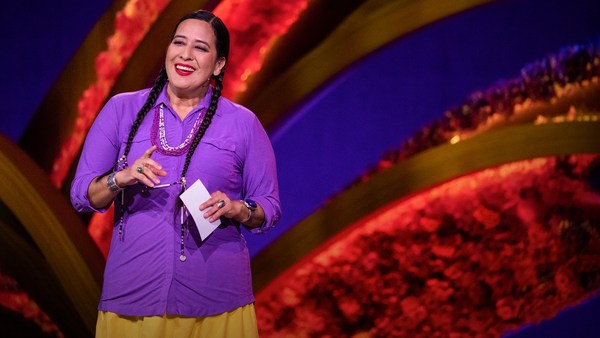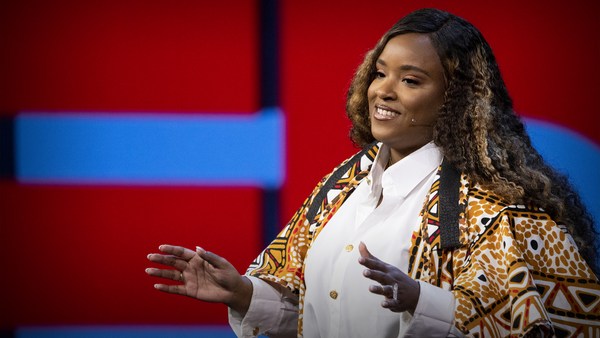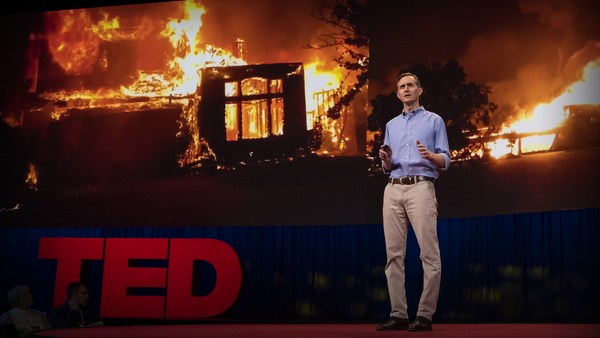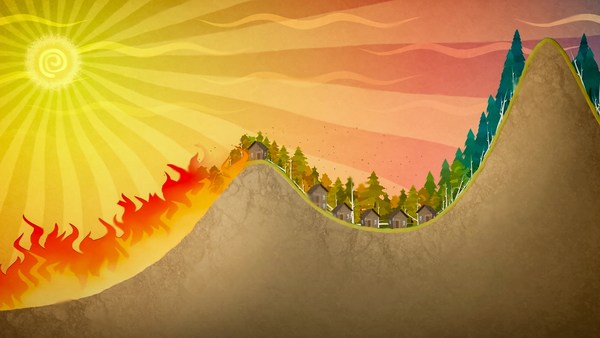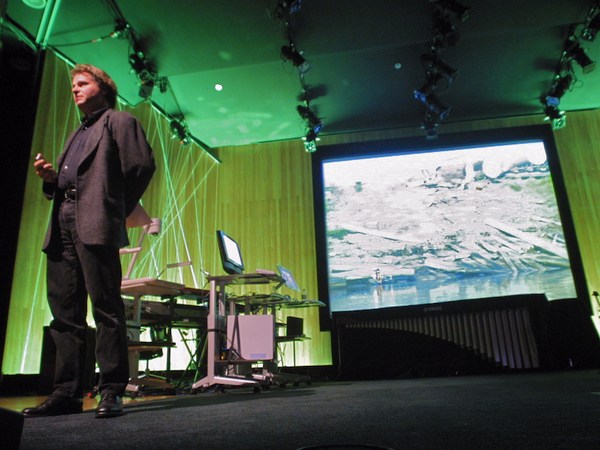I'd like to acknowledge and pay my respect to the Anishinaabe Nation and its Council of Three Fires, the Ottawa, the Chippewa, and the Potawatomi peoples. I am grateful to be here on your sacred ancestral lands.
Do you see fire as friend or foe? In Australia, we have a growing issue around fire that challenges us every fire season. And because of our changing climate, there are now other places in the world that are confronted with this same challenge.
My story is about my personal and cultural relationship with fire. It has been a life-long relationship and as a Mangarda Balladong Nyungar, a person from the southwest corner of Australia, I acknowledge fire not only as a friend but as a part of my being and my spirit.
However, I have also seen firsthand how big a threat fire is. During the Black Summer of 2019 and 2020, the east coast of Australia burned like never before. And the whole world saw. The smoke that was huge drifted across the southern Pacific Ocean all the way to Chile and Argentina. And there were glaciers in New Zealand that turned brown from that same smoke.
Paradoxically, Australia needs fire. My people applied the right fire diligently and expertly for millennia. It shaped the evolution and the DNA of the landscape and of nature itself.
The elder in this shot gently reached down and lit the grass and the ground that we were standing on. As the fire slowly trickled, he said to us, "Go and stand near a tree and observe what you see." What we saw was amazing. There were all these various insects and critters clambering up the tree trunk, escaping the slow-moving fire. The elder then said to us, "This is the best indication that our burn is the right fire."
Fire has a sacredness when it is applied through our cultural lore. What manifests during the cultural burning is a spiritual enlivening of nature, where country is renewed and the spirit of the land is awakened. Kaarl-ngariny is our sacred practice of burning country. Country, or ancestral lands, in my language is “Boodja.” This is me applying kaarl-ngariny on my sacred lands, Nyungar Boodja.
Nyungar Boodja is 200,000 square kilometers in size. This map shows the 14 language groups of my people, the Nyungar nation. My language group is Ballardong. Boodja gives my people identity, connectedness and spirit.
This is Aboriginal Australia. At the time of first contact, there were over 800 First Nations language groups and 250 distinctly Indigenous nations. Pre-colonization and for 65,000 years, our lands were managed by cycles of creation through our First Law ways. However, since 1788, Boodja has been suffering from the introduced destructive cycles of colonialism, developmentalism, capitalism and industrialization. These have all contributed significantly to climate change on my Boodja.
Part of my relationship with fire included me having an 18-year-long career as a professional firefighter in Perth. It is here that I learned a deep respect for the destructive force of fire and its awesome power. Since fire was considered our enemy, as fierys, we were trained to control it. So we learned about fire behavior and fire management. I would have attended over 2,000 bush fires many of which resulted from controlled burns getting out of control and becoming wildfires.
As a professional firefighter, I learned that our mission is to protect property and save life. But as First Nations and traditional custodians of our lands, our two key principles for applying the right fire is to put Boodja first and to keep nature balanced. We cannot keep countries safe by burning everything indiscriminately to the ground. The ground is sacred, and we must protect and preserve it.
This is the result of a controlled or prescribed burn. It was carried out by DBCA, an agency in Western Australia that manages parks and wildlife. This type of burning occur when incendiary devices are dropped from aircraft in order to take out as much bushland as possible in the shortest amount of time. This burning is destructive to nature and to Boodja. The burn marks on this jarrah tree, one of our very sacred species, is 10 foot high. This is not consistent with our cultural lore and standards for applying fire. The dark charring indicate the intensity of the heat and the height of the flames. You can see that this landscape is devastated from this controlled burn. I remember a Nyungar elder in my community once very angrily referred to this type of burning and the people that carry it out as “legal arsonists.”
Right across Australia, and in many parts of the world, the very real impact of climate change and wildfires are destroying nature in many ways. We must today provide care for Mother Earth like never before. As Nyungar people, our fight to stay connected to our sacred lands is dependent on our ability and freedom to practice kaarl-ngariny. Kaarl-ngariny requires us to be able to read country, keeping Boodja healthy keeps us healthy. This is kaarl-ngariny, the right fire, as it is applied in Queensland, northern Australia. This is what a healthy, clean burn looks like. When we burn the right way, we know country will regenerate in balance. The balanced health is dependent on how and when fire is applied. Remember the right fire at the right time, in the right place.
Cultural burns are different across differing ecological regions. This is a cool burn in Victoria, in southeastern Australia. The principles of how, why and when to burn remain consistent across all regions and amongst all First Nations groups. Fire is medicine for country. It heals the land and it cleanses it, and it renews the spirit of Boodja.
In 2008, my family took possession of 2,100 acres in our ancestral lands in the wheatbelt region of western Australia. This country had been badly overcleared, overgrazed, overfertilized and overcropped. Our vision, which we saw as our responsibility, was to heal this land. So we set out to plant native endemic species of plants which in turn attracted all sorts of other native birds, animals, flowers and grasses to also return. My brothers and I and our children have been practicing kaarl-ngariny on this Boodja now for 15 years. This is the same photo seven years later. Today, the trees in the foreground are so large, they restrict the view of this landscape. The right fire at the right time is very good for our environment. It's very good for Boodja and it's very good for us. This is it today. A big part of what helped us achieve our goal, our patient ambition, was the application of kaarl-ngariny across our landscape.
Kaarl-ngariny is an important element of our First Nations regenerative land management model. This regenerative land management model is a contemporary version of our traditional practice of caring for country. Seeing country in a holistic sense and understanding how it is a part of us and we are a part of it is important in the practice of caring for country.
Fire management in Australia is critical to the biodiverse and ecological health of our land. When ecological health is poor or nonexistent, biodiversity and spirit is also poor or nonexistent. Therefore, to heal the spirit of our lands, we must protect, conserve and regenerate the biodiversity and ecology of Boodja everywhere.
Fire can be either a very important ally or a massively destructive threat, if we don't commit to manage and apply the right fire at the right time in the right place.
Thank you.
(Applause)
